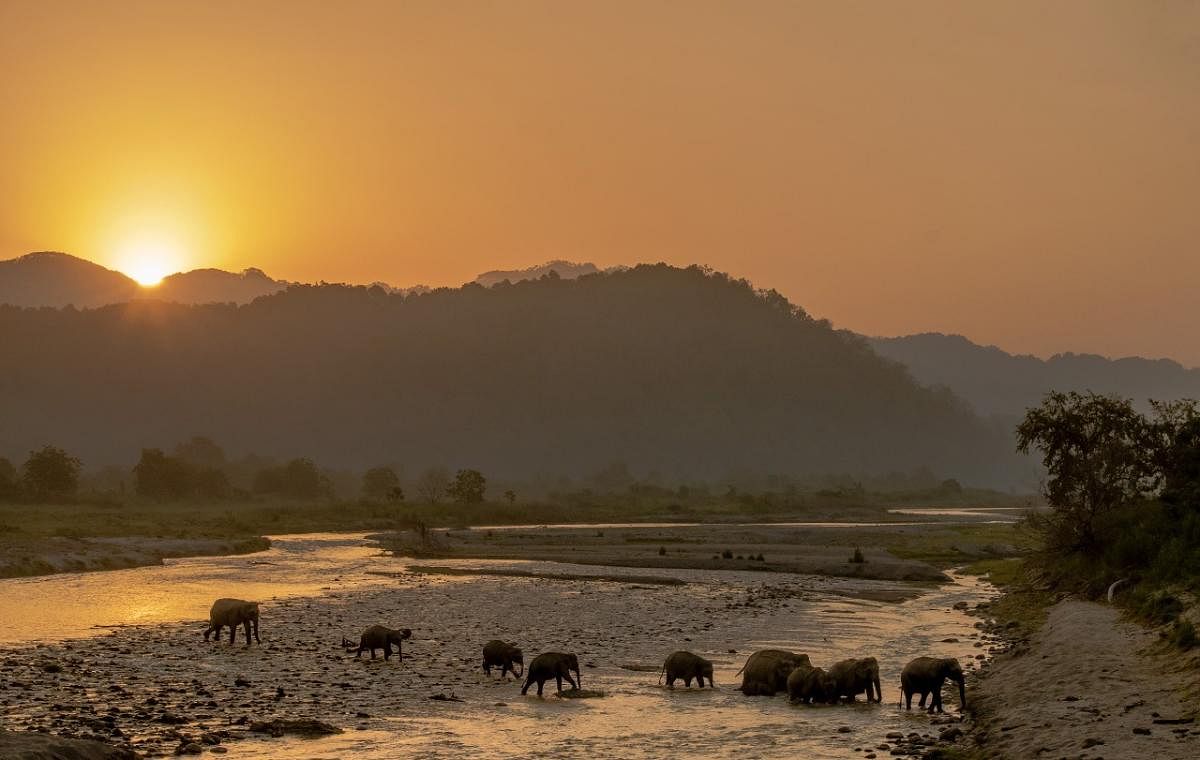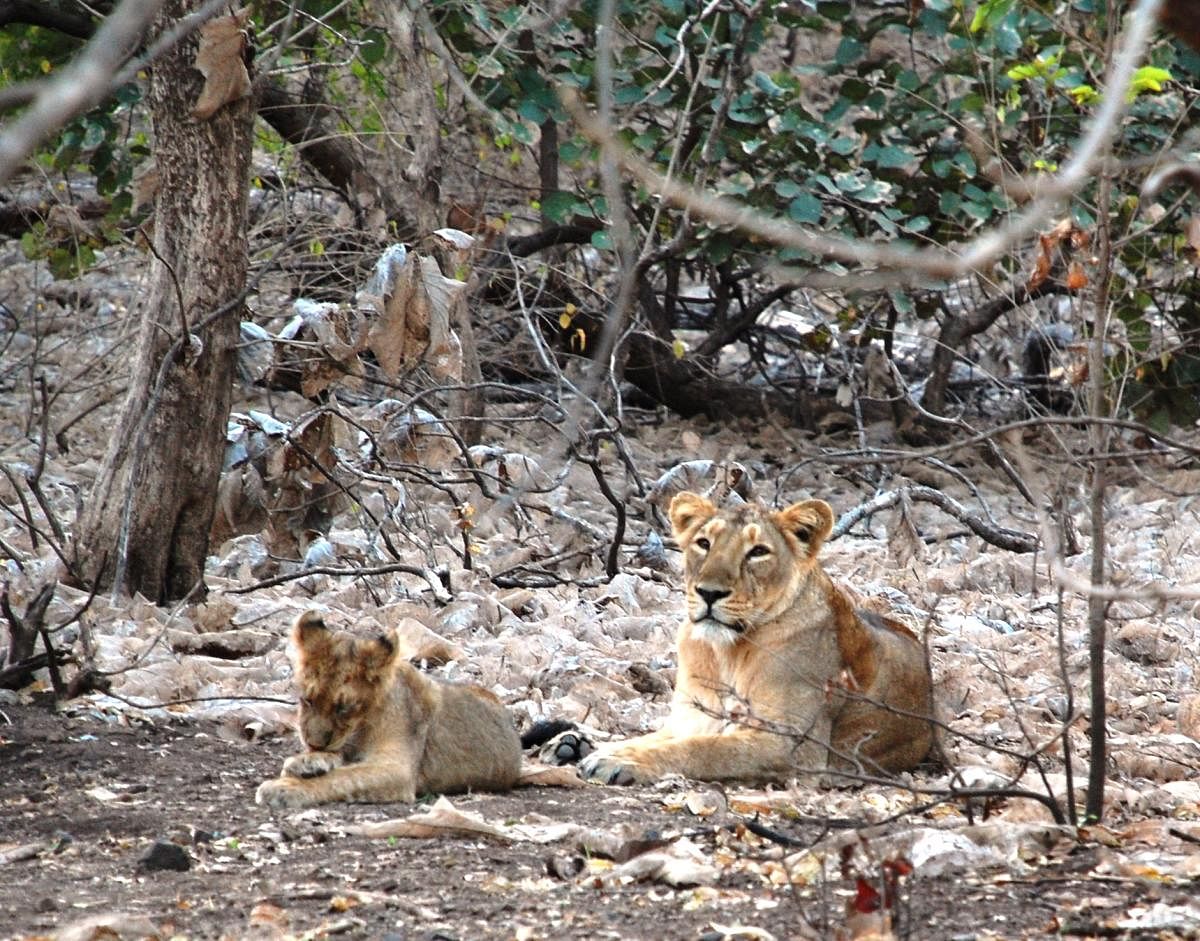

Wildlife safari season is beginning after a long monsoon hiatus. With the National Parks (NPs) of India opening their gates for wildlife safari in October-November, it’s time to hop on to a jeep, or an elephant’s back for an exhilarating safari. Going on a safari needs a bit of planning so as to avoid disappointments. Here are three National Parks from across the country that offer an out-of-the-world safari experience along with a checklist on how to plan ahead.
Kaziranga National Park
The one-horned rhinoceros, engrossed in its chore of filling up its belly is an unforgettable sight. This gentle beast is the hero of Kaziranga — hugging the mighty Brahmaputra River in Assam. To boot, unlike elusive tigers, the chance to see rhinos in the wild in Kaziranga is very high. Kaziranga is also a haven for birds, which attracts hordes of professional bird photographers from the world over. Of the four safari zones, most prefer the Western and Central Zones for rhinos. Bird watchers flock towards the Central and Eastern zones.
Travel and stay: Air: Guwahati (217 km), Jorhat (97 km) Rail: Guwahati (240 km), Furkating (75 km)
Staying: Government and private accommodations are available near the NP.
Jim Corbett National Park
Corbett, in the Kumaon Himalaya raising along its north rim of the Ramganga Reservoir and a river flowing within the NP, deserves a visit for its stunning natural beauty alone. This first National Park of India has everything that a wildlife enthusiast can crave. Unlike in most NPs, here, you can stay inside the park, and get the first-hand feel of living inside a jungle.
Safaris: Of the five zones, Dhikala, Bijrani and Jhirna are popular. The Durga Devi Zone attracts bird watchers.
Travel and stay: Air: Delhi (250 km), Pantnagar (80 km); Rail: Ramnagar, Uttarakhand (1 km).
Staying: The National Park owns accommodations inside some of the zones. There are also some hotels and resorts around the NP.
Gir National Park
Gir, in the Saurashtra region of Gujarat remains the principal home of the Asiatic Lion — the animal glorified by the Greeks, Romans, Persians and Indians over millennia, in sculptures, motifs and folklore. If you’re lucky, your safari driver will suddenly stop the vehicle and your guide will signal you to remain silent and not even whisper.
And when you would wonder what’s going on, the guide would point towards a particular branch of a tree on which a leopard would be leisurely lying down, inconspicuously.
Safaris: There are four safari routes (trails). A route is allotted while booking. Depending on the season and recent incidence of sightings, check the routes with the highest probability of spotting lions.
Travel and stay: Air: Rajkot (160 km) Rail: Sasan Gir (26 km), Veraval (45 km) Junagarh (55 km).
Staying: Several accommodations are available near the NP.
Planning for a safari?
Book in advance: Always book in advance. Safaris are limited by the carrying capacity of each National Park, and slots get filled up fast. To avoid disappointment, book safaris well in advance.
Zones to pick: National Parks have different zones for safaris. Each zone is
unique in topology, flora and fauna. Check out the zones and book accordingly, though you may not always get the zone you desire. Plan for more than one safari and zone in a NP. Hire safaris from those approved and licensed by the National Park Authority. You will get trained drivers and guides.
Clothes to wear: Morning safaris, which start before daybreak, can be biting cold in the jungle on open jeeps, even during the day, temperatures are warm. Dress for comfort and protection from the weather. Avoid bright colours. Earthen shades are preferable.
Accessories: Camera with a zoom lens. A binocular is a good idea. Carry a pocket notebook to take notes.
Enjoy nature: Finally, do not be obsessed to see only the big predators — tiger, leopard, lion. Enjoy nature, like the regal hornbill, or the silent flutter of a coltish band of otters and you will never be disappointed with a jungle safari.